Bhangra is a type of non-traditional music of Punjab originating in Britain, specifically Southall. It is a type of upbeat popular music associated with the Punjabi diaspora in Britain. The style has its origins in the folk music of Punjab as well as western pop music of the 1970s and 1980s. Prior to this musical fusion, Bhangra existed only as a dance form in the native Punjab. This Punjabi music was unique in that it was not traditional nor did it seek any authenticity. While the traditional folk music of Punjab has a set of melodies that are used by various singers, Bhangra was a form of strict "band culture" in that new melodies were composed for each song. Therefore, the musicians were as important as the singers.
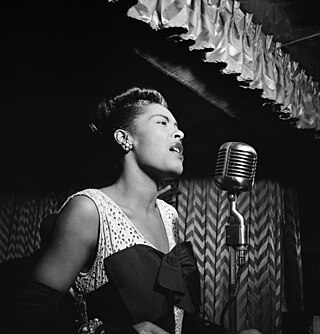
A song is a musical composition performed by the human voice. This is often done at distinct and fixed pitches (melodies) using patterns of sound and silence. Songs contain various forms, such as those including the repetition and variation of sections.

Radha, also called Radhika, is a Hindu goddess and the chief consort of the god Krishna. She is the goddess of love, tenderness, compassion, and devotion. In scriptures, Radha is mentioned as the avatar of Lakshmi and also as the Mūlaprakriti, the Supreme goddess, who is the feminine counterpart and internal potency of Krishna. Radha accompanies Krishna in all his incarnations. Radha's birthday is celebrated every year on the occasion of Radhashtami.

Religious music is a type of music that is performed or composed for religious use or through religious influence. It may overlap with ritual music, which is music, sacred or not, performed or composed for or as ritual. Religious songs have been described as a source of strength, as well as a means of easing pain, improving one's mood, and assisting in the discovery of meaning in one's suffering. While style and genre vary broadly across traditions, religious groups still share a variety of musical practices and techniques.

Bhajan refers to any devotional song with a religious theme or spiritual ideas, specifically among Indian religions, in any language. The term bhajanam means reverence and originates from the root word bhaj, which means to revere, as in 'Bhaja Govindam' . The term bhajana also means sharing.

Thumri is a vocal genre or style of Indian music. The term "thumri" is derived from the Hindi verb thumuknaa, which means "to walk with a dancing gait in such a way that the ankle-bells tinkle." The form is, thus, connected with dance, dramatic gestures, mild eroticism, evocative love poetry and folk songs, especially from Uttar Pradesh, though there are regional variations.

The music of Afghanistan comprises many varieties of classical music, folk music, and modern popular music. Afghanistan has a rich musical heritage and features a mix of Persian melodies, Indian compositional principles, and sounds from ethnic groups such as the Pashtuns, Tajiks and Hazaras. Instruments used range from Indian tablas to long-necked lutes. Afghanistan's classical music is closely related to Hindustani classical music while sourcing much of its lyrics directly from classical Persian poetry such as Mawlana Balkhi (Rumi) and the Iranian tradition indigenous to central Asia. Lyrics throughout most of Afghanistan are typically in Dari (Persian) and Pashto. The multi-ethnic city of Kabul has long been the regional cultural capital, but outsiders have tended to focus on the city of Herat, which is home to traditions more closely related to Iranian music than in the rest of the country.
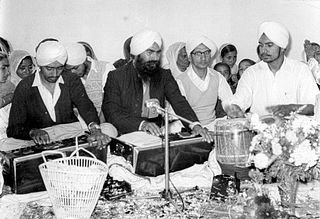
Kirtana, also rendered as Kirtan or Keertan, is a Sanskrit word that means "narrating, reciting, telling, describing" of an idea or story, specifically in Indian religions. It also refers to a genre of religious performance arts, connoting a musical form of narration or shared recitation, particularly of spiritual or religious ideas, native to the Indian subcontinent. A person performing kirtan is known as a kirtankara.

Bengali music comprises a long tradition of religious and secular song-writing over a period of almost a millennium. Composed with lyrics in the Bengali language, Bengali music spans a wide variety of styles.

The music of Suriname is known for kaseko music, and for having an Indo-Caribbean tradition.
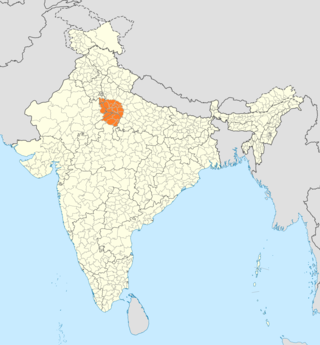
The Braj language, Braj Bhasha, also known as Vraj Bhasha or Brij Bhasha or Braj Boli, is a Western Hindi language. Along with Awadhi, it was one of the two predominant literary languages of North-Central India before the switch to Hindustani in the 19th century.
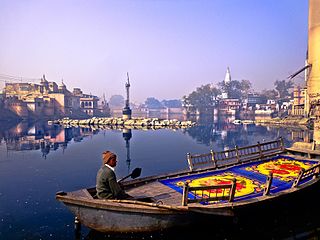
Mathura district situated along the banks of the river Yamuna is a district of Uttar Pradesh state of north-central India. The historic city of Mathura is the district headquarters. Mathura district is home to many important sites associated with goddess Radha and Krishna, who is believed to be born in Mathura and grew up in the nearby town of Vrindavan. Both cities are some of the most sacred sites in the Vaishnava tradition, making Mathura district an important Hindu pilgrimage centre.

The Wadali Brothers – Puranchand Wadali and Pyarelal Wadali – are Sufi singers and musicians from Guru Ki Wadali in the Amritsar District in Punjab, India. Pyarelal Wadali, the younger of the two died on 4 March 2018 at the age of 75 due to cardiac arrest at the Fortis Escorts Heart Institute, Amritsar.
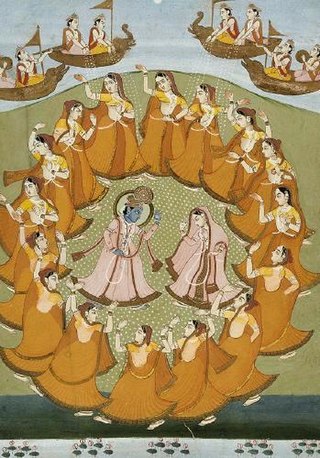
The Raslila, also rendered the Rasalila or the Ras dance, is part of a traditional story described in Hindu texts such as the Bhagavata Purana and Gita Govinda, where Krishna dances with Radha and the gopis of Braj. Rasalila has also been a popular theme for other India classical dances including Bharatanatyam, Odissi, Manipuri Raas Leela, Kuchipudi, and Kathak.
Goalpariya Lokogeet is a folk music of Goalpara, sung to traditional lyrics. It is sung by goalpariya language speaking people. It was primarily Pratima Barua Pandey, who raised the profile of this hitherto unknown genre of music nationally in India. This genre of music is being kept alive by the Koch Rajbongshi community in their music festivals. Currently, albums of Goalpariya songs are released commercially; and Goalpariya musical motifs and instruments are increasingly used in popular music in India. Some noted singers are Bina Das Borthakur, Mini Bhattacharya, Nazmul Hoque, Allauddin Sarkar, Hamida Sarkar, Abdul Jabber, Rahima Begum Kalita ,Ayaan Anisur Etc.

The Culture of Uttar Pradesh is an Indian culture which has its roots in Hindi, Bhojpuri and Urdu literature, music, fine arts, drama and cinema. Lucknow, the capital of Uttar Pradesh, has historical monuments including Bara Imambara and Chhota Imambara, and has preserved the damaged complex of the Oudh-period British Resident's quarters, which are being restored.

Kavigan, Kobi Gaan, Kobi Lorai or Kabigan is a form of Bengali folk performance wherein folk poets sing and perform. A verbal duel among the poets, this mystic minstrels art was popular with rural folk form in nineteenth century in Bengal region, which includes the Indian state of West Bengal and Bangladesh.. The mythological themes from both Hindu and Muslims religious texts were commonly used for Kobi Gaan.
Bera or Badrivan is a village or gram panchayat in Nauhjhil Block, Mat Tehsil of Mathura district, Uttar Pradesh, India. It situated on Khair-Tentigaon Road. Bera village is about 50 kilometres from Mathura and only 17 kilometres from Khair.
Haveli Sangeet is a form of Hindustani classical music sung in havelis. The essential component is dhrupad. It originated in Mathura in Braj, northern India. It takes the form of devotional songs sung daily to Krishna by the Pushtimarg sect.

Maach is a form of folk theatre from the Malwa region of the Indian state of Madhya Pradesh.


















